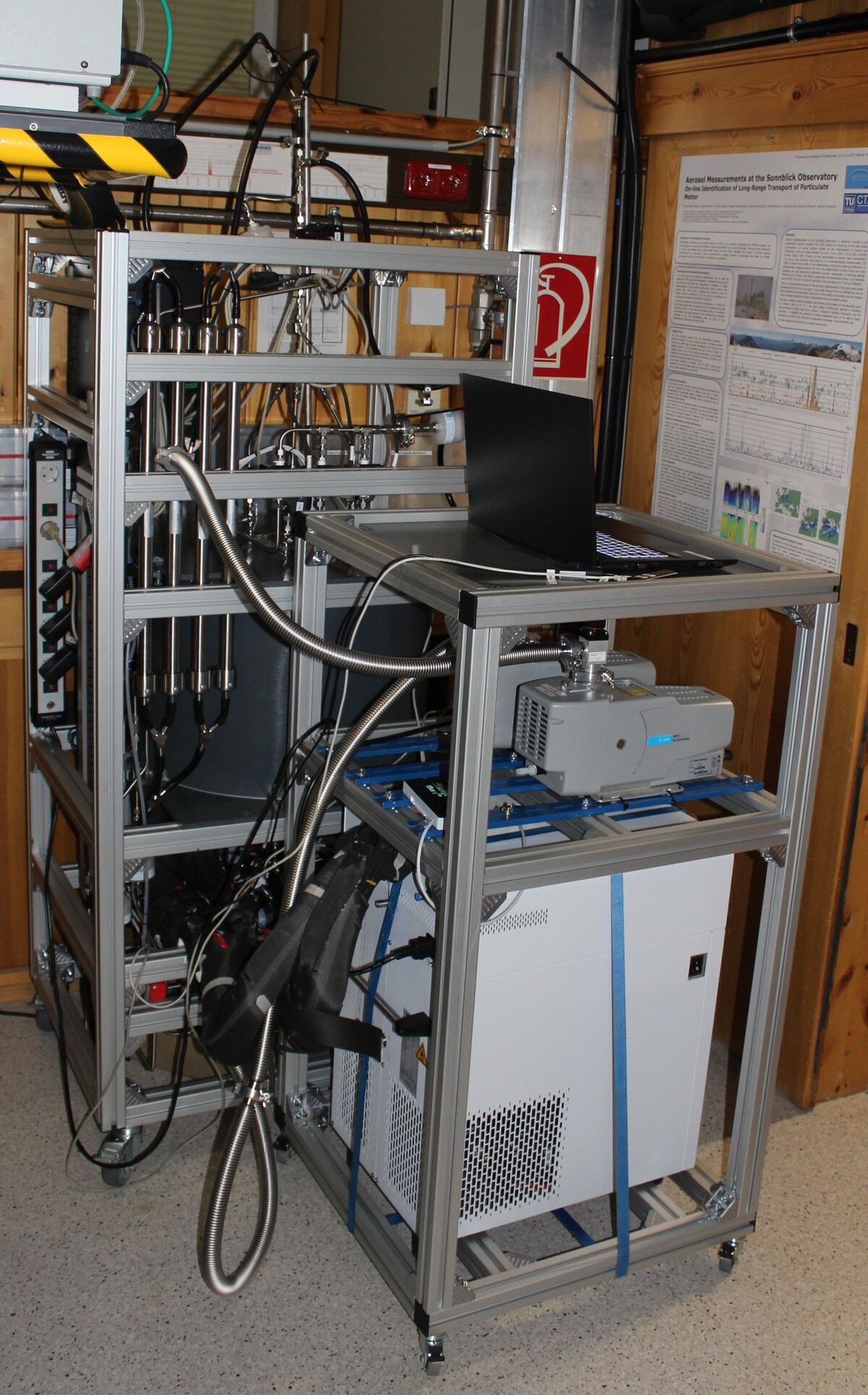PINEair measures ice-nucleating particles over the Southern Ocean
Ice formation induced by ice-nucleating particles (INPs) is a key-step for the formation, of tropospheric clouds, and thereby largely impacts their life cycles, climatic impact as well as their ability to form precipitation. However, knowledge about the abundance of INPs, especially in the free troposphere, is still missing. The PINEair instrument is a new aircraft-based version of the Portable Ice Nucleation Instrument PINE (Möhler et al., 2021), which was developed especially for use on the HALO (High Altitude and Long Range) research aircraft. It is the first aircraft-based instrument that can perform automated in-situ measurements of INPs to temperatures of −65 °C. The instrument was developed and built at the KIT Institute of Meteorology and Climate Research Atmospheric Aerosol Research (IMKAAF), in collaboration with the Goethe University Frankfurt, the Bilfinger Nuclear & Energy Transition GmbH and the enviscope GmbH. Financial support was received through the German Science Foundation project “PINEair - A new instrument for aircraft-based in situ measurements of ice nucleating particles at cirrus formation conditions (MO 668/7-1)” in the framework of the Priority Programme SPP-1294 “Atmospheric and Earth System Research with the High Altitude and Long Range Research Aircraft (HALO)”. A prototype version of PINEair was developed, built and tested at the Sonnblick Observatory for first successful INP measurements in the free troposphere at cirrus formation temperatures below -40°C (Pia Bogert, PhD thesis, KIT, 2024).
During the year 2025, the final aircraft-based version of PINEair was built and certified as part of the payload for the HALO-SOUTH mission during September and October 2025 in the Southern Ocean region between New Zealand and Antarctica. For five weeks, HALO operates out of Christchurch, New Zealand, carrying out measurement flights in one of the most pristine air masses with very low aerosol and trace gas concentrations, but high cloudiness with important but unexplored roles and feedback in the climate system.
Approximately 50 researchers will participate on site, led by the Leibniz Institute for Tropospheric Research (TROPOS). Further mission partners are the Leipzig Institute for Meteorology at Leipzig University, the Johannes Gutenberg University Mainz, the Goethe University Frankfurt, the Max Planck Institute for Chemistry Mainz, the Karlsruhe Institute of Technology (KIT), the DLR Institute of Atmospheric Physics and the Forschungszentrum Jülich. The aircraft is operated by the DLR Flight Experiments facility. The University of Canterbury in Christchurch and the MetService New Zealand contribute ground-based measurements.

